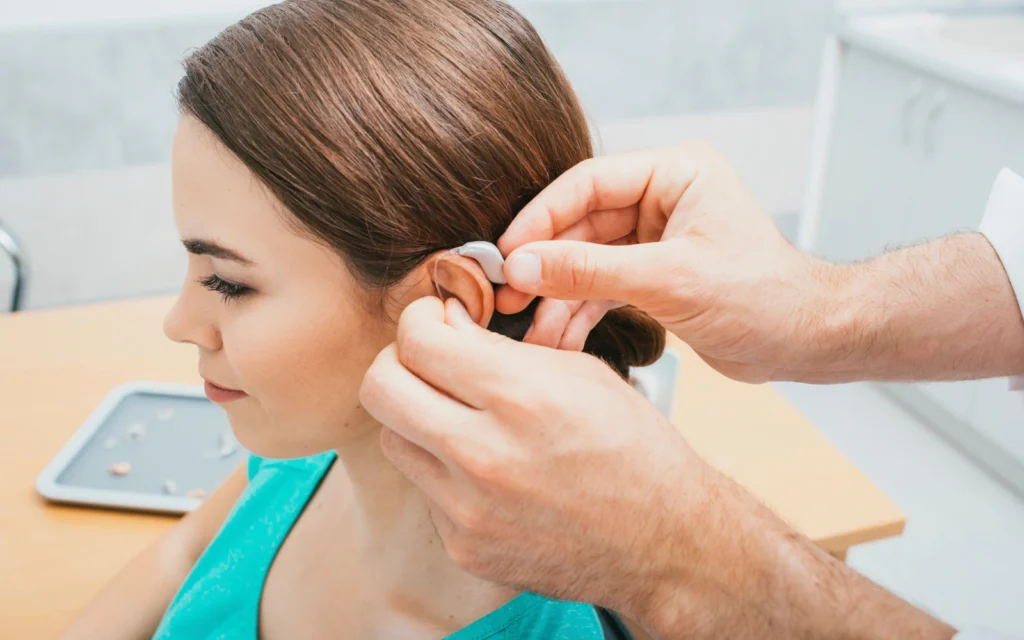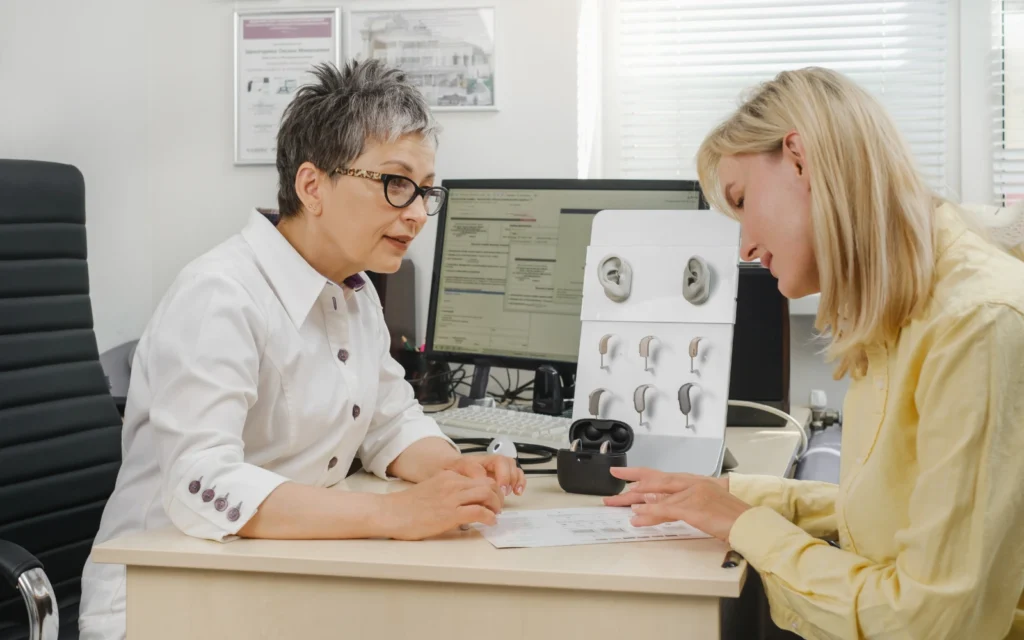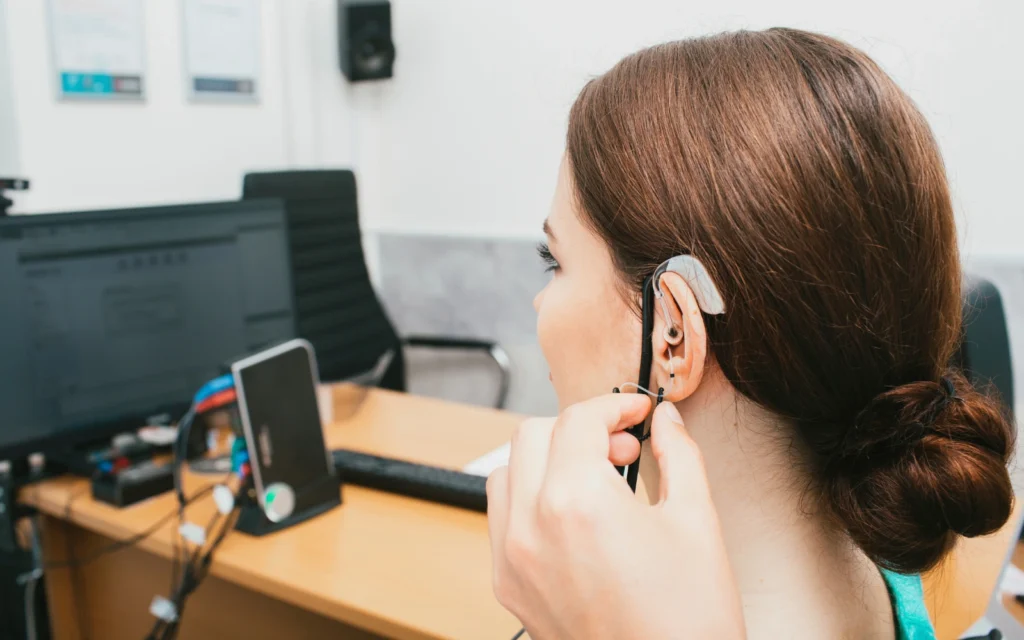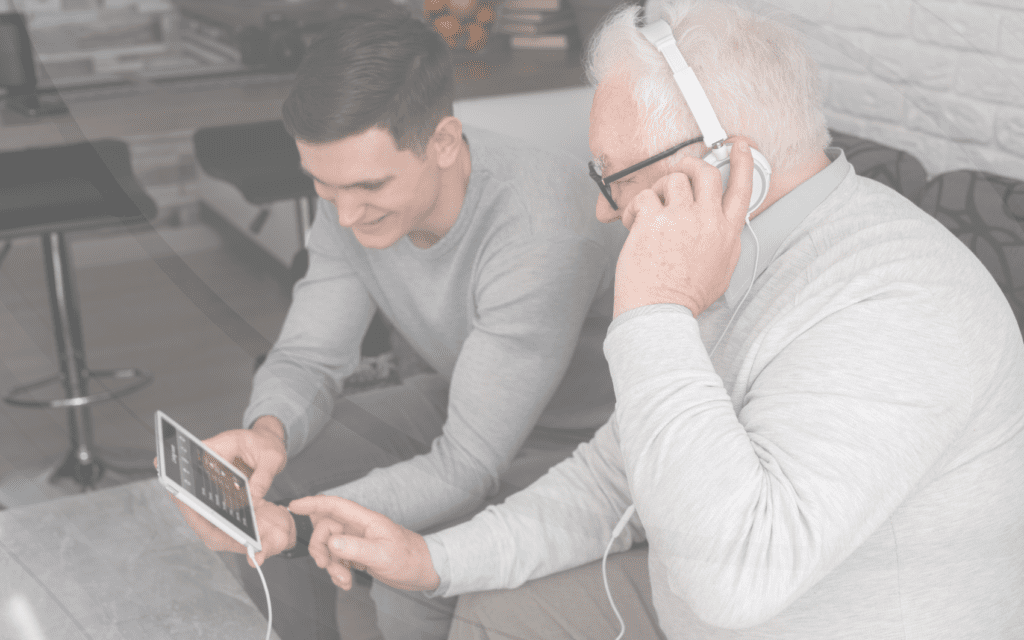Hearing Aid Selection & Fitting
Home » Hearing Solutions » Hearing Aid Selection & Fitting
Hearing Aid Selection and Fitting Services in Mumbai

Our Process for Perfect Hearing Aid Selection and Fitting

Step 1: Hearing Aid Selection

Key Criteria for Choosing the Best Hearing Aid
-
Comprehensive Hearing Assessments:
Choosing the right hearing aid begins with a comprehensive hearing assessment to understand your specific needs. -
Lifestyle Considerations & Preferences:
Do you spend time in quiet settings, social gatherings, or busy, noisy places? Your lifestyle guides our recommendation. -
Technology Features:
From simple, easy-to-use models to advanced hearing aids with Bluetooth connectivity, noise reduction, and smart controls. -
Comfort and Fit:
We prioritize a snug, secure, and comfortable fit to make daily use enjoyable and hassle-free. -
Budget-Friendly Options:
We provide hearing aids that combine affordability with exceptional quality.
Step 2: Hearing aid verification
To confirm the effectiveness of your hearing aids, we perform hearing aid verification. This step ensures that the devices are properly calibrated and deliver the correct amplification for your hearing loss.
Methods Used for Hearing Aid Verification
To ensure your hearing aids are delivering optimal performance, Quality Hearing Care uses the most advanced hearing aid verification measures. These techniques allow us to precisely adjust your hearing aids for your unique hearing profile.

Real-Ear Measurement
Live Speech Mapping

Step 3: Hearing Aid Fitting for Optimal Comfort & Performance
What we do during the hearing aid fitting:
-
Program the Device:
Adjust the hearing aid settings to match your hearing test results and personal preferences. -
Customize the Fit:
Shape and fit the device to your ears for maximum comfort and security. -
Test in Real Environments:
We check the hearing aid in real-world situations to ensure it delivers clear sound in different settings. -
Provide Training:
Our team teaches you how to wear, clean, and maintain your hearing aids for long-term use. -
Adjust for Feedbacks:
Fine-tune the device based on your feedback for the best results.
How Long Does a Hearing Aid Fitting Take?

Step 4: Ongoing Support & Follow-Up Care
-
Regular Follow-Ups:
We fine-tune the devices as needed based on your feedback. -
Maintenance Services:
Guidance on cleaning, storage, and battery replacement to keep your hearing aids in perfect shape. -
Quick Repairs:
If something goes wrong, we offer fast and effective repair services to minimize disruptions.
Aural Rehabilitation
- Sensory management to improve hearing abilities.
- Trainer directed guidance on technology and management of the hearing aid
- Perceptual treatment to enhance speech recognition and language understanding,
- Counselling to increase engagement and address remainders or limitations on an affective and operative level.
Why choose Quality Hearing Care?
Here’s why Quality Hearing Care is the best choice for hearing aid selection and fitting services in Mumbai:
-
Personalized Hearing Solutions:
We match hearing aids to your hearing loss, lifestyle, and preferences. -
Advanced Tools:
Our hearing aid verification methods, like real-ear measurement and speech mapping, ensure precise performance. -
Skilled Audiologists:
Our team of experts provides professional guidance, adjustments, and ongoing care. -
Affordable Options:
Quality hearing aids that suit different budgets without compromising performance. -
Continuous Support:
We are here for you from the first fitting to long-term maintenance and support.
Schedule an Appointment
Ready to improve your hearing? Book an appointment with Quality Hearing Care today. Our expert team will guide you through the hearing aid selection and fitting process, ensuring you get hearing aids that fit perfectly, work seamlessly, and enhance your daily life.
Don’t wait—contact us now to schedule your consultation and take the first step toward hearing better and living better!
FAQs
It can take anywhere from a few days to a few weeks to adjust to wearing a hearing aid. At first, sounds might seem louder or unusual as your brain gets used to hearing them again. With regular use, your hearing will improve, and you’ll feel more comfortable. Our team will guide you through this process and offer tips to speed up the adjustment period.
Yes, hearing aids are designed to help people with all degrees of hearing loss, including severe cases. Modern hearing aids come with advanced features like amplification, noise reduction, and directional microphones, which make it easier to hear sounds clearly. Our audiologists will recommend the right hearing aid to match the severity of your hearing loss.
The best style of hearing aid depends on your hearing needs, comfort, and lifestyle. Behind-the-ear (BTE) aids are great for severe hearing loss, while smaller-in-the-ear (ITE) or invisible-in-canal (IIC) aids work well for mild to moderate hearing loss. Our experts will help you choose a style that fits comfortably and works effectively for your daily life.

